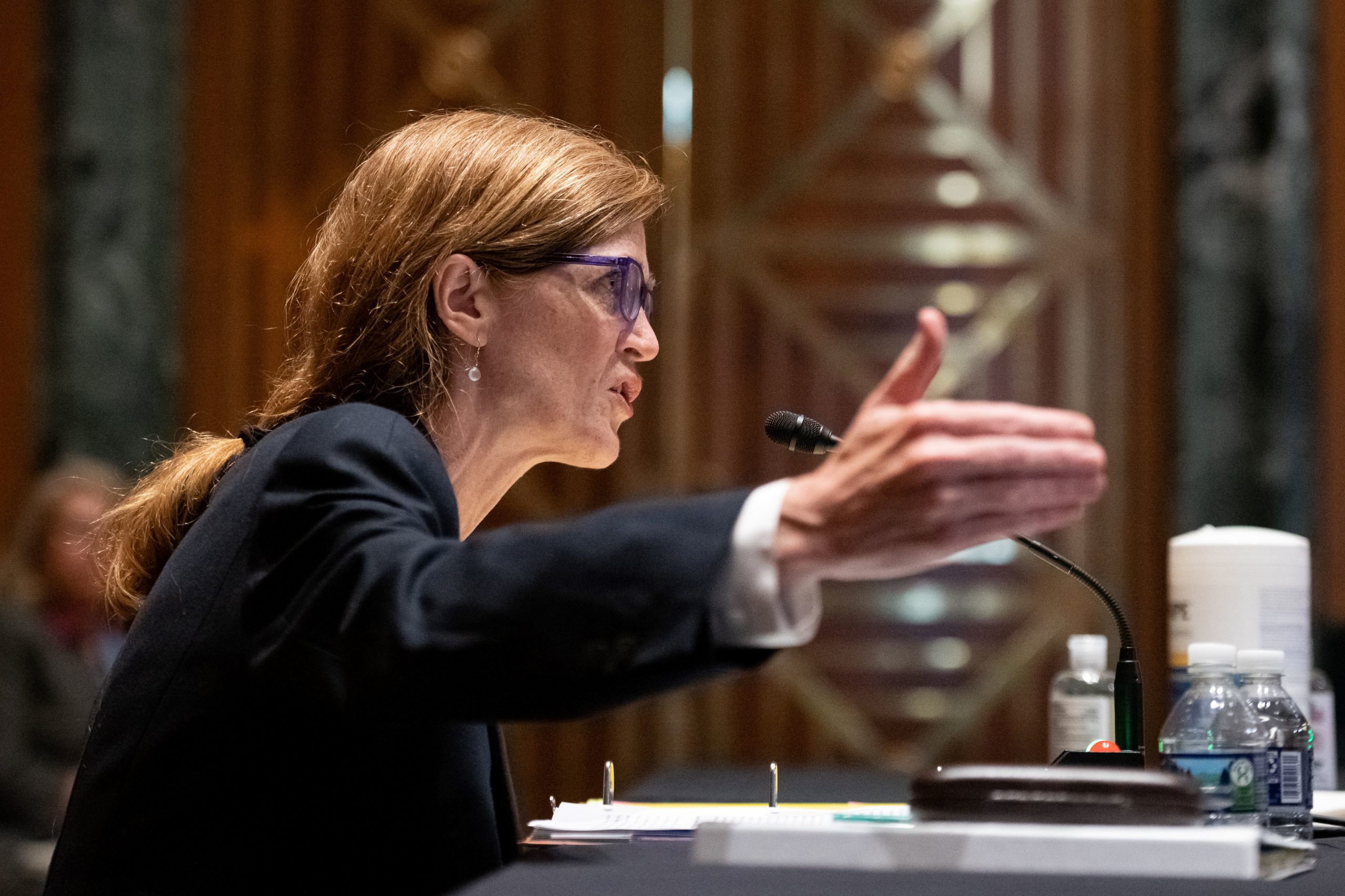
Last week’s House Foreign Affairs Committee Hearing on locally led development highlighted the bipartisan consensus about its numerous benefits. Subcommittee chairman Rep. Joaquin Castro (D-TX) noted that each of the last four administrations has advanced this vital foreign aid reform because “evidence indicates that working with local partners improves the effectiveness and sustainability of our foreign assistance programs.” Ranking Member Rep. Nicole Malliotakis (R-NY) concurred saying, “until we support meaningful local ownership of local challenges and build the capacity of local organizations to solve these problems themselves, our foreign assistance will not have lasting impact.”
In other recent Congressional hearings, USAID Administrator Samantha Power has repeatedly called for the U.S. Agency for International Development to advance locally led development. “In order for us to get the most out of our programs” she said, “we need to increase local partnerships and address staffing shortfalls,” calling the push toward locally led development “the essence of whether the development we do is going to be sustained over time.” In March, Power struck a similar chord, “effective development is driven by those on the ground with local knowledge and expertise.”
In her July testimony, Power identified USAID’s massive shortage of contracting officers (COs) and agreement officers (AOs) as a critical problem standing in the way of more locally led development. She said each USAID CO “has managed over 65 million dollars annually over the past four years—more than four times the workload of their colleagues at the Department of Defense.” Given such a heavy workload, it may be understandable that some USAID staff would choose the path of less resistance, leading them back to USAID’s traditional U.S.-based implementing partners. In fact, in 2017 USAID found that just 25 of its U.S.-based implementing partners received fully 60 percent of its funding, reducing competition and innovation. Power also explained that, according to the latest data, just 5.6 percent of funding went to USAID’s local partners. Yet, however understandable this procurement shortcut may be, it is leading to U.S. foreign assistance investments that too frequently have no local roots and which essentially evaporate into thin air, as the recent headlines from countries like Afghanistan and Haiti demonstrate all too clearly.
Related Content
This nonlocal approach and its negative consequences are recognized by the agency and USAID has already made several attempts to increase implementation through local actors. For example, since 2009, initiatives like Local Solutions, the Local Systems Framework, and the Journey to Self-Reliance, Local Works, the New Partnerships Initiative (NPI), and USAID’s Acquisition and Assistance Strategy have all taken steps in the right direction. Yet the vast majority of USAID’s funding still does not flow through local actors because USAID has not changed its ways of doing business through vigorous procurement reform and the requisite staffing levels of COs and AOs to implement it.
Hitting precisely on these points, in July, Sen. Chris Coons (D-DE), chairman of the Senate appropriations subcommittee that oversees USAID’s budget (SFOPs), asked Powers what she considered to be a potential strategy for “increasing the localization of our assistance programs” and how additional staff would ensure U.S. funds better support local partner-led initiatives. Coons added, “I look forward to working with you on tackling USAID’s procurement processes and the challenges in terms of both regulations and staffing.” On the House side, SFOPs chairwoman Barbara Lee’s FY22 bill, which has already passed the House, also clearly supports the growth of locally led development, requiring USAID to report to Congress on funding for programs “implemented directly by local and national NGO entities” and also on how USAID plans to increase these resources in the future.
This recognition by top decisionmakers on the Hill and the administration is very encouraging. Finally, the wonky problem of USAID’s business practices has come to light as perhaps the single largest barrier to advancing locally led development. There is urgency to more effectively use U.S. foreign aid, and thankfully, a major part of the solution Power, Coons, and Lee are seeking is already working at USAID and has already proven its mettle in response to the COVID crisis—USAID’s local staff.
When USAID’s foreign service officers (FSOs) were evacuated at the start of the COVID-19 pandemic, then Administrator Mark Green, delegated authority to USAID’s local staff, mainly foreign service nationals (FSNs), to continue the work of USAID without their American supervisors. The FSNs were given special temporary authority to sign contracts and obligate funds on behalf of the U.S. government; that is, to act as COs and AOs. By making this delegation of authority permanent, Administrator Power could quickly and significantly increase USAID’s cadre of COs and AOs, opening the door to much greater progress on locally led development. Doing so would also allow the agency to more fully benefit from the local contacts of these very valuable local professionals, who USAID staff regularly refer to as “the backbone of the agency.”
This idea is supported by the Modernizing Foreign Assistance Network (MFAN), which called on appropriators to “evaluate the continuation of the expanded management and supervisory roles of Foreign Service Nationals during USAID’s COVID-19 response.” Similarly, the USAID Alumni Association has called for USAID to “accelerate efforts to enhance the roles and responsibilities of Foreign Service National (FSN) employees in USAID’s field missions. This should include responsibilities for program management.” In addition, recently acting USAID Administrator Gloria Steele has also endorsed the idea of local staff having warrants to act as COs and AOs, saying “they stay with USAID, they are retained … so having them keep their warrants will help solve a number of problems at once and is a win-win.”
Quickly increasing the number of USAID COs and AOs by extending or reinstating the warrants of well-qualified and experienced FSNs is well within the authorities of the administrator. To do so most effectively, USAID should be able to increase the salaries for qualified FSNs (enable them to become a grade 12 or 13) in line with the increased responsibilities, authorities, and accountabilities that holding a warrant entails. A clear set of norms to reflect on bias or perceived conflicts of interest in the local context should also be put in place. Then, USAID should also open a pathway for more FSNs to become CO/AOs by having them work under the supervision of FSOs who would then recommend they receive a warrant to sign contracts and agreements.
These steps would also help USAID advance its commitments to diversity, equity, and inclusion (DEI), and professional recognition and fairness. Retired FSNs have been vocal about their subordinate position within USAID, and while some mission directors have created FSN senior advisor positions in the front office, USAID’s overall unwillingness to recognize them as fully-capable professionals takes its toll. Former FSNs like Jamal al Jibiri, detailed their reasons for frustration, noting that when American officials arrived at post and met with the FSNs: “They would always have this one line about ‘we would be nothing without you guys; if it wasn’t for you nothing would operate; it’s you guys who run everything so we really need you guys and appreciate you.’” The former Jordanian FSN continued to explain why these statements were so defeating. “If there was a real appreciation for the FSNs,” he said, “it would be reflected in how we are compensated and how we’re seen, but to tell us that everything would fall apart without us, but not to take that into consideration when you’re looking at compensating us or looking at rewarding us, then it’s meaningless.” Unfortunately, many similar accounts can be found in the archives of the Oral History Program of the Association for Diplomatic Studies and Training (ADST).
In this regard, part of the solution to USAID’s critical CO/AO shortage has the potential to advance both locally led development and the effort to decolonize USAID’s staffing model. USAID leaders should carefully consider this opportunity to reduce a major obstacle to achieving the agency’s goals on locally led development. Hill leaders who favor locally led development and DEI should also support this innovation by USAID. The FSNs’ decades of professional contributions and the positive experience of their mission leadership during COVID-19 show that they are ready to do more.


